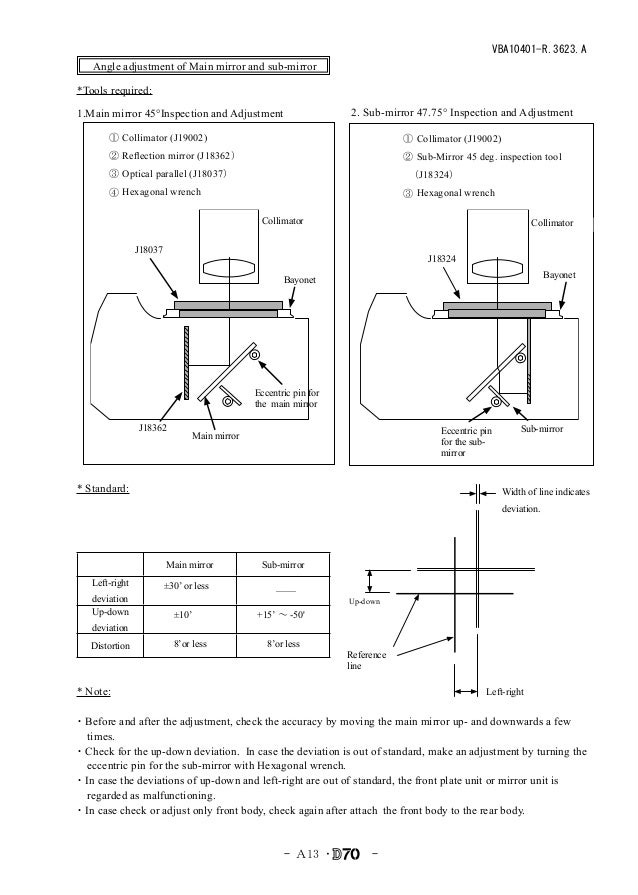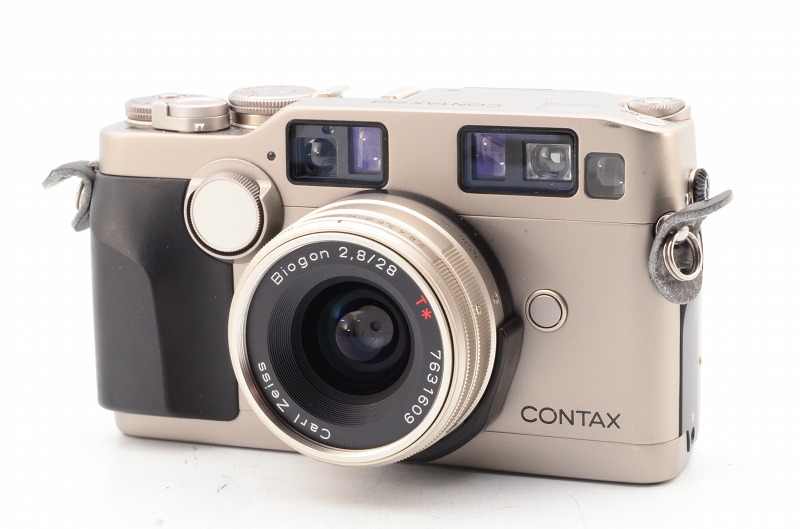Nikon Inspection And Adjustment Program
Like the D7000, the D7100 produced clean JPEG files with plenty of detail and a wider than average dynamic range. The default colour saturation for JPEG files in the review camera was higher than we usually find in enthusiast DSLRs, a fact that was confirmed by our Imatest tests. Interestingly, NEF.RAW files converted into TIFF format with Adobe Camera Raw showed the camera capable of restrained saturation and excellent colour accuracy. The review camera exhibited outstanding performance at high sensitivity settings. Long exposures at night showed little noise right up to ISO 6400. The Hi 1 and Hi 2 settings were slightly noise-affected with exposures of a second or two.
- Nikon Inspection And Adjustment Program Application
- Nikon Inspection And Adjustment Program
- Nikon Inspection Adjustment Program
Keywords: Nikon Inspection and adjustment program, inspection and adjustment for AF, adjustment for AF accuracy, defocus For a DSLR, accurate AF relies on both the mechanism and the firmware adjustment. The AF adjustment parameters for the firmware are stored in the camera's flash memory and can not be accessed directly.
Interestingly the review camera produced flash shots with almost no discernible noise at both of these settings and noise was undetectable in flash shots right up to ISO 6400. Yup, that's how Toshiba's sensor works. You need to crush the blacks in post or to use/make a style that is similar to the Standard.
If you like to color grade your shots, download Kodak Elitechrome picture style - with proper white balance you can get really nice results with this pic style, plus you will get some additional space for grading. Or just play with Picture Control Utility and see what you can make. Just remember, the more contrast picture style you make, the less bending is going to appear.
If you are guerilla style, stick to the Standard. New firmware - 1.03. Reduced noise (horizontal lines) in movies shot with 1280×720; 60p or 1280×720; 50p selected for Frame size/frame rate. Fixed an issue that sometimes caused the display to darken when images were viewed by pressing the (playback) button. Fixed an issue with the menus for some languages where continued scrolling would cause the camera to freeze.
Nikon Inspection And Adjustment Program Application
Fixed issues with the virtual horizon displayed using the Viewfinder virtual horizon option. Fixed an issue with the camera freezing when the Clean image sensor option was used. I have a problem with hot pixels when shooting video!


Nikon Inspection And Adjustment Program
Service centre said they cannot help me! First of all. I have no any problems when shooting photo. I met my problem shooting video, exactly when use ISO lower 1600. When use ISO 1600 and higher I have no problem, but if ISO 1250, 1000, 800, 640 I have some hot pixels on my video.
Nikon Inspection Adjustment Program
When ISO 500 and lower they are not so bright, but doesn't gone at all. I have 'Nikon D7100 Shooting image Inspection and Adjustment program', I run Image Adjusment 5, but it doesn't help, when I run Image Adjustment 6 it goes error, maybe I don't khow how to make Image Adjustment 6 correctly, because it requires some source of light and I don't know how to do it correctly, but it seem to me it doesn't help at all. In service center they said that it is imposible to resolve my promlem at all!
I repeat: there are no problems with photo shooting, but on video I have following hot pixels. Ingens.org.ua/files/Untitled-1.jpg The video semple.
Hello, I am new to this forum. I have been shooting video with the D7100 and recently purchased an Atoms Ninja 2 hoping to get a little better quality out of this meh camera. Crack acca primus trial. Does anyone else shoot with a similar setup? My question revolves around the image coming out of the camera and into the Ninja. It appears as though when I set the camera to 1080 the signal coming into the Ninja is at 1080. Is there a setting that I am missing to get the proper frame rate signal into the ninja?
I have another Ninja connected to a D810 and it is working as expected.
Hi everybody! AF Shift adjustment for D700 works fine for me. For this cam one cannot read shift value (there is no Read SHIFT AMOUNT button in program for D700). 1) Open INSPECITON and ADJUSTMENT for AF. ADJUSTMENT for AF ACCURACY.

AF SHIFT ADJUSTMENT. 2) set SHIFT DIRECTION and SHIFT VALUE and REMEMBER IT!!! And then press OK and wait the confirmation of success. I've shifted near by 100um which resulted in 5-10cm shift and then shifted 100um far and almost returned values back. AF SHIFT ADJUSTMENT makes changes to FLASH ROM data. I saved FLASH ROM via (CONFIRMING the DATA. Store and Restore the FLASH DATA.
Read from camera, Write to file) before each SHIFT ADJ. Then I've compared exported FLASH ROM files: there are changes in some bytes after SHIFT ADJ.
After two operations: SHIFT NEAR100 and SHIFT FAR100 values of these bytes became changed by 1. (No visible difference in test shots.) - SHIFT ADJ with zero value changes NOTHING in FLASH ROM. I repeat, shift is RELATIVE to current value, so do backups and remember shift values you apply! There are no detail manuals for these Inspection and Adjustment programs. But there are repair manuals for nikon bodies in web and they contain instructions how to work with Inspection and Adjustment Software. Read it before using. Personally I saw NO visible changes in WB and AE functioning after AF changes.
Posts: 3 Joined: Wed Jun 19, 2013 11:11 pm Been thanked: time. There are also functions to tune AF system by points.
INSPECITON and ADJUSTMENT for AF. ADJUSTMENT for AF ACCURACY. INSPECTION for AF ACCURACY. Allows one to check focus misses for every focus sensor. If you try to open it, 'Can not Open The LENS DATA FILE (.) for AF Adjustment' window pops out.
I think it means that you have to check body AF using the special calibration lens - lens for which you have LDATA.DAT containing its number and shift values for reference body. There are 2 problems as i see: 1) the program doesn't have function to READ current shift values, so one cannot backup initial values; 2) usual persons have not such a reference lenses. But one can create LDATA.DAT with zero values for shifts and do INSPECTION for AF ACCURACY to check the AF accuracy for your body+current lenses. For doing it one need to 1) Make DxxxxLDATA.DAT: LensS/N Lens NO=YOURNUMBER Lens Offset LensOfstCHK=0 LensOfstCVK=0. Just edit D3LDATA.DAT that you have. 2) open INSPECTION for AF ACCURACY 3) enter Room temperature, press START 4) hit Prepare and see what you need now: - AF adj. Lens (we use ours one) -Multi CAM xxx AF CHART (i hope sheet of paper with contrast parallel lines should work) - Proper lighting 5) then hit end to close Prepare window and hit OK to begin the Inspection.
6) during the process you will obtain mattive of values which i hope will be shift amounts to tune you body for your lens Theoretically if you do this procedure with different lens you can understand which points are bad tuned and be able to get shift data to load in the body to calibrate it. Personally I have no big problems with AF points misses and don't want to mess with it) Posts: 3 Joined: Wed Jun 19, 2013 11:11 pm Been thanked: time. EVACUATING INSPECTION MODE With the camera plugged in and connected to the VM, VirtualBox indicates that there's USB traffic (and USBPcap confirms it's camera related).
With no camera plugged in I get the same error (without the wait). Wireshark 1.10 can open USBPcap files, but it can't decode the MTP/PTP protocol. The version of Wireshark from this forum with MTP/PTP support doesn't seem to support the USBPcap capture files. So I'm not quite sure what's going on. But it looks like the camera is repeatedly sending out identification info. Unfortunately I don't have a serial cable for the camera (MC-33/MC-31), so I can't test the other D200 program (which indicates it's RS323 only).
Posts: 2 Joined: Fri Dec 28, 2012 2:58 pm Been thanked: 0 time.
Comments are closed.